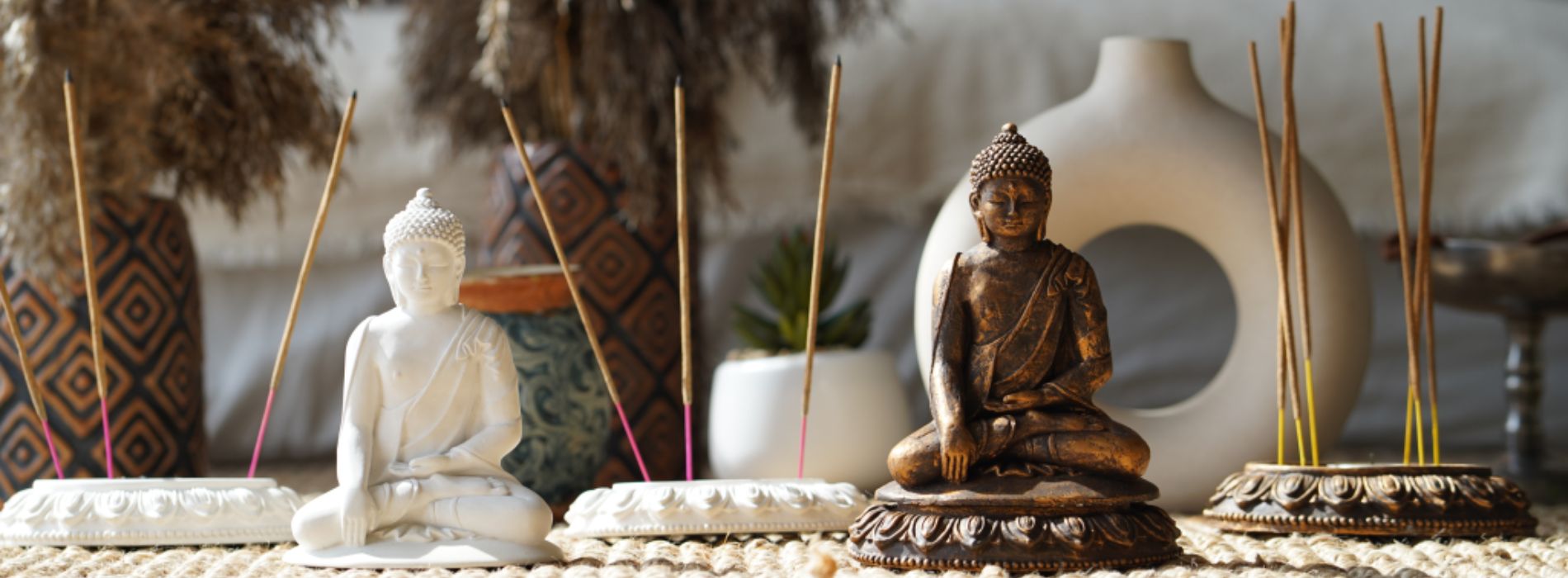How to place a Buddha?
How to place a Buddha?
Choose a suitable location
When you decide to place a Buddha in your home, it is essential to choose a suitable location. Ideally, it should be placed in a quiet, peaceful place, where you can meditate and connect with your spirituality. By choosing a place that inspires and calms you, you can create an atmosphere conducive to Buddhist practice.
It is also important to consider the size of your Buddha in relation to the chosen location. Make sure it is neither too big nor too small for the room, to create a harmonious balance.
Orientation
The orientation of your Buddha is also important. Traditionally, it is recommended to place the Buddha facing east, as this symbolizes enlightenment and welcomes the first rays of the rising sun. However, if this does not suit your space or preferences, you can also place it in another direction that seems appropriate to you.
Just make sure the Buddha is positioned so that it is easily visible and accessible, in order to take full advantage of its benevolent energy.
It is also important to secure your Buddha in an elevated location, such as a shelf or table, to protect it from potential damage.
Create a meditation space
If you have enough space, you can create a space dedicated to meditation around your Buddha. This could be a quiet corner in your living room, a separate room or even a garden. Make sure the space is clean and clear, to promote peace of mind and concentration.
You can also add decorative elements such as meditation cushions, scented candles or houseplants to create a calming and relaxing atmosphere. Don't forget to include personal items that have spiritual meaning to you, such as gemstones or pictures of loved ones.
By investing time and energy into creating this sacred space, you can fully immerse yourself in your spiritual practice and have a transformative experience.
Respect Buddhist traditions
When placing a Buddha in your home, it is important to respect Buddhist traditions and teachings. Here are some key points to consider:
1. Avoid placing your Buddha in the bathroom or bedroom, as this is considered disrespectful in Buddhist tradition.
2. Make sure your Buddha is at an appropriate height. Traditionally, it is recommended to place the Buddha at eye level or slightly higher, to symbolize spiritual elevation.
3. Avoid placing objects or statues of Buddhist deities at a level higher than the Buddha, as this can be seen as a form of disrespect.
4. Clean your Buddha and its surrounding space regularly to maintain a fresh, meditative atmosphere.
Offerings and prayers
When you place your Buddha, you can also make offerings and prayers to attract positive energies and show your gratitude. You can light candles in front of your Buddha, offer fresh flowers or burn incense.
By practicing regular offerings, you connect with your spirituality and create a relationship of respect and devotion to the Buddha and his teachings.
It is recommended to recite Buddhist prayers or mantras in the presence of your Buddha to strengthen your spiritual practice.
Stay open and flexible
Finally, it is important to remember that Buddhist practices vary and that each individual has their own relationship with Buddhism. Feel free to adjust the tips above based on your own beliefs and preferences.
The key is to place your Buddha with love, respect and intention, to create a sacred space that nourishes your soul and helps you on your spiritual journey.
Conclusion
By placing a Buddha in your home, you can create a sacred space that inspires you and helps you in your Buddhist practice. Choose an appropriate location, respect Buddhist traditions, create a space for meditation, and stay open to your own spiritual path. By practicing with love and intention, you can enjoy the benefits of the presence of the Buddha in your daily life.













































